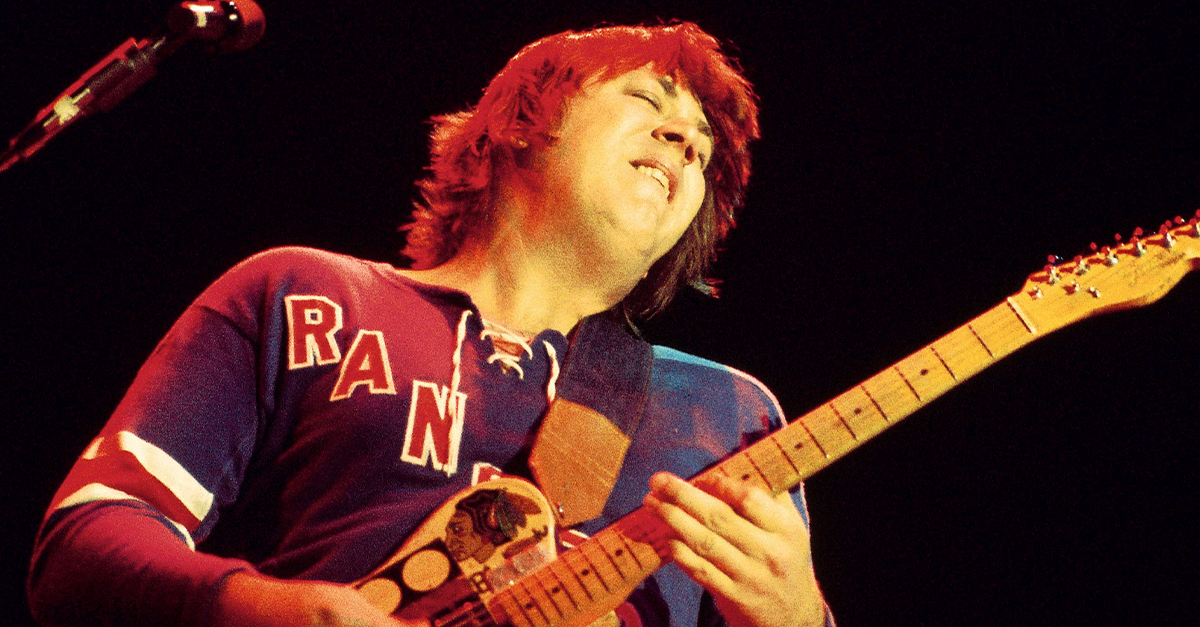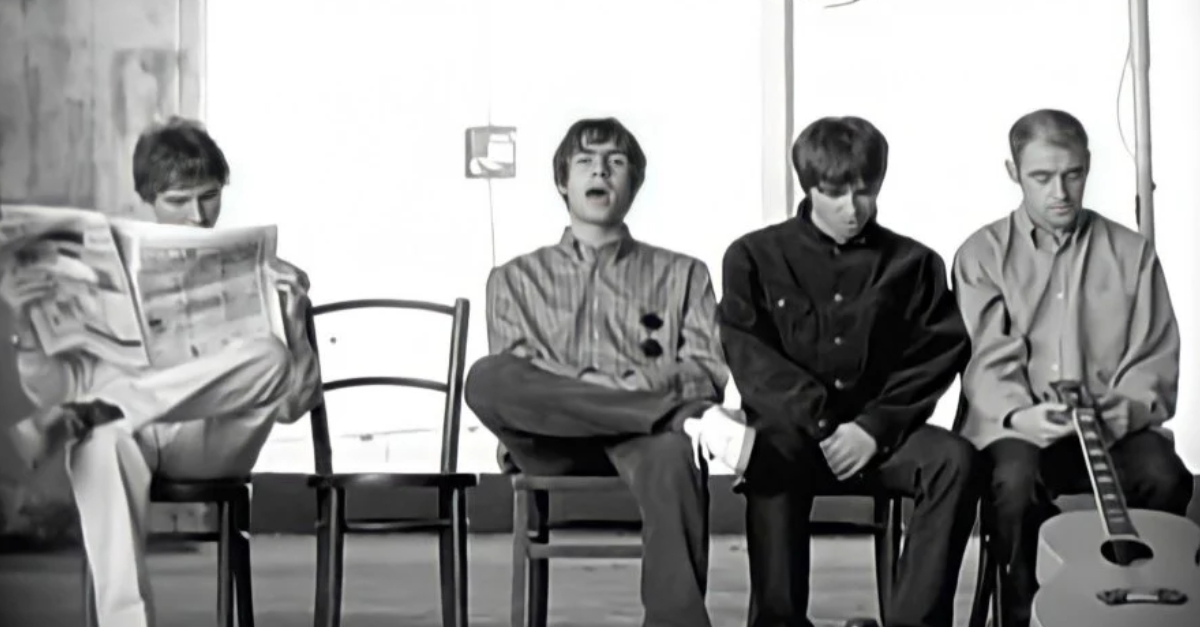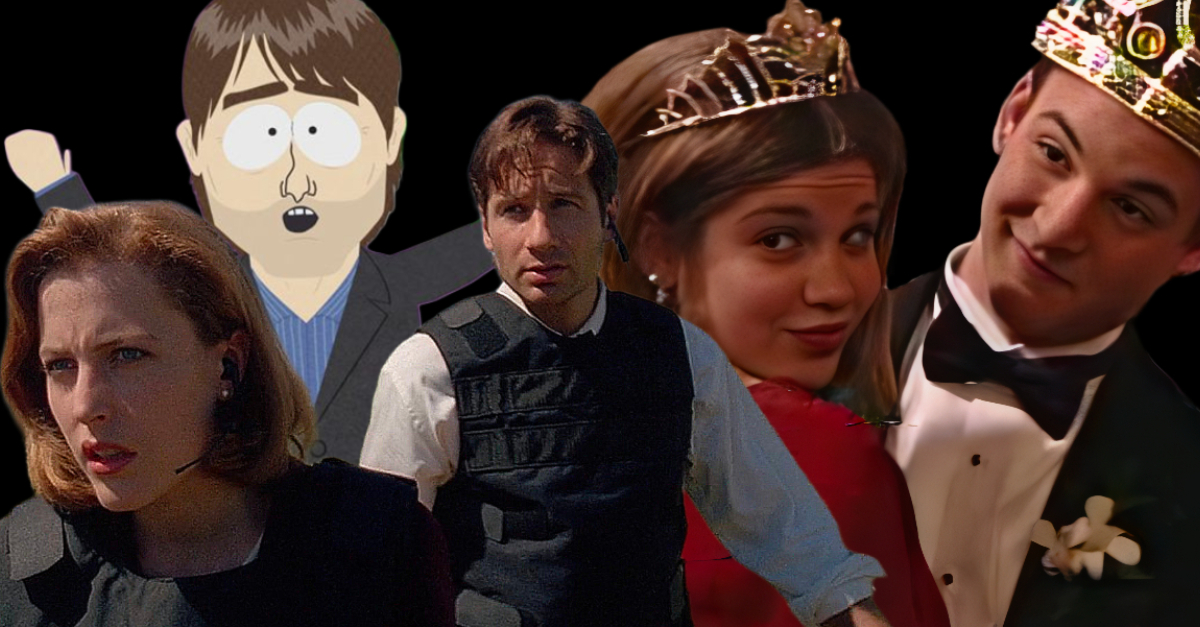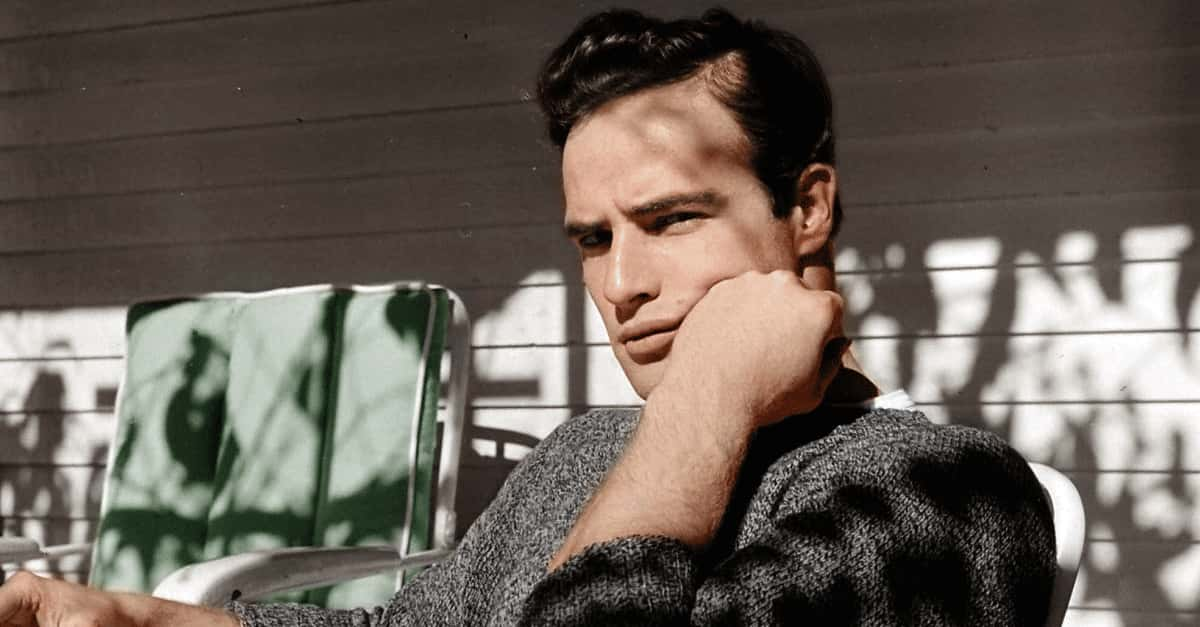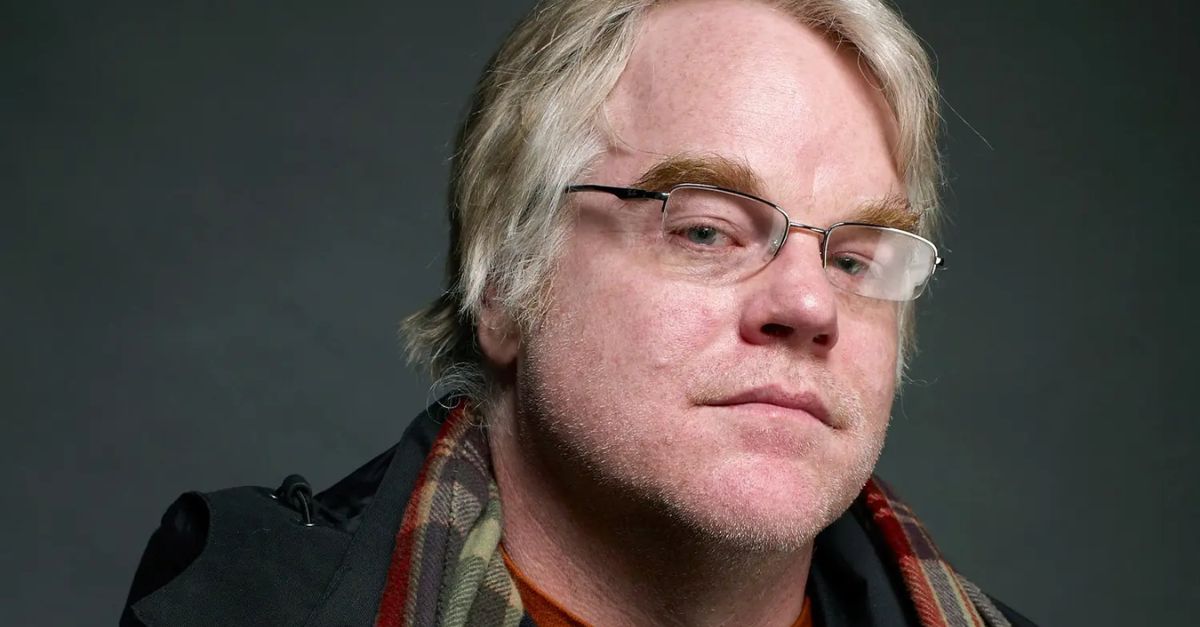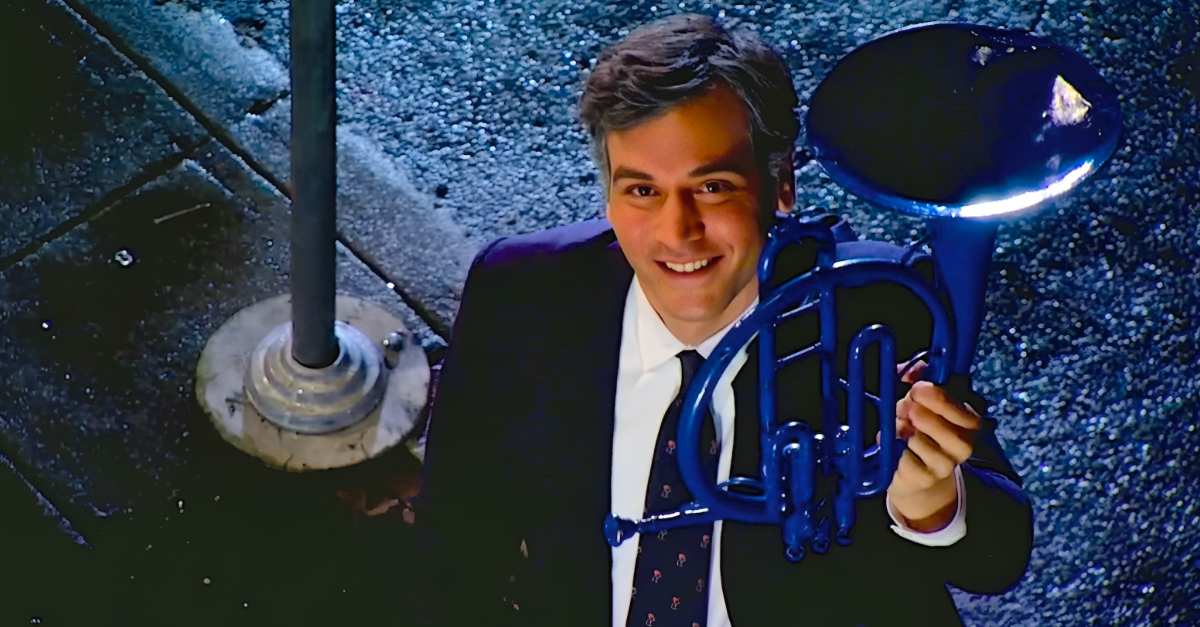The Background Legend
Terry Kath may not be one of the most instantly recognizable names in the world of rock and roll, but not for lack of skill or impact. His own band members have stated that, had he been in a smaller group where his guitar talents could be more easily noticed, history would have held him up as one of the greats.
It’s not just his friends saying this, though, as he was called "the best guitarist in the universe" by none other than Jimi Hendrix. Sadly, though, he was doomed to meet a dreadful end.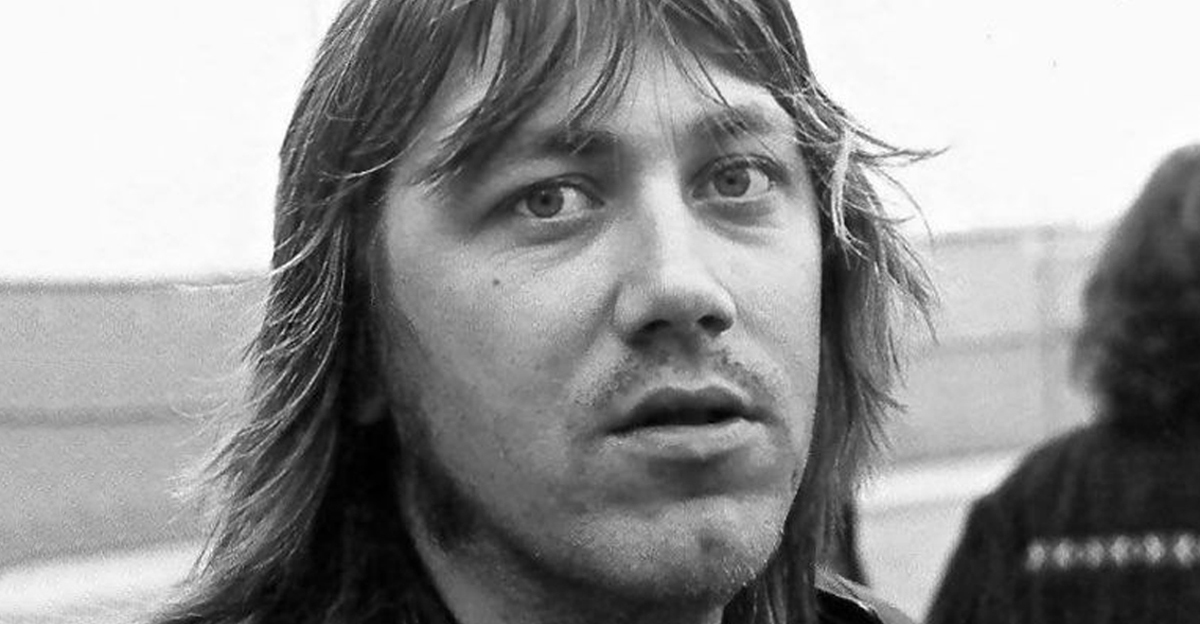
1. They Were All Musical
While being such an outstanding talent, Terry Kath spent most of his career as one among many musicians, even during his formative years. Born on January 31, 1946, in Chicago, Illinois, his family was happy to foster his musical creativity as he grew up, helping him learn a variety of instruments.
His mother often played the banjo, while his brother was a drummer, and Terry tried his best to follow in their footsteps. Little did he know, music would play an even bigger role in his life than he realized.
 FilmRise, Chicago: The Terry Kath Experience (2016)
FilmRise, Chicago: The Terry Kath Experience (2016)
2. He Did It Himself
By the time he reached grade nine, Terry knew exactly what instrument he wanted to pursue, and he soon received his own guitar and amplifier. Inspired by the music of those like Johnny Smith and Howard Roberts, he largely taught himself to play rather than rely on anyone else. But this was only the beginning.
3. He Was A Simple Man
It wasn’t that Terry didn’t have access to professional guitar training, and he even tried studying under various teachers. However, he soon realized that this kind of formal education wasn’t for him, especially since he had no interest in anything beyond mastering the basic chords of rock and roll.
But though he'd found his true passion, there were some very important people in Terry's life who weren't too thrilled about the path he'd chosen.
 FilmRise, Chicago: The Terry Kath Experience (2016)
FilmRise, Chicago: The Terry Kath Experience (2016)
4. He Rebelled
Stemming from his musical upbringing, Terry quickly gained an intense passion for rock and jazz and decided that he would stop at nothing in the pursuit of a music career. His parents weren’t exactly thrilled with this life plan, especially his father, who wanted a more stable job for his son. Nonetheless, Terry set out on the path to stardom—and the choices he made paid off in a big way.
 Koh Hasebe/Shinko Music, Getty Images
Koh Hasebe/Shinko Music, Getty Images
5. He Went Pro
Rather than try making a name for himself on his own, Terry took the smarter option of collaborating with other up-and-coming musicians. At only 17, he joined a semi-professional band called The Mystics and would transition to several more groups over the next few years. Even then, his artistic vision stood out.
 Koh Hasebe/Shinko Music, Getty Images
Koh Hasebe/Shinko Music, Getty Images
6. He Was In Charge
Following a brief stint with the band Jimmy Rice and the Gentlemen, Terry moved on to join another group called Jimmy Ford and the Executives. He wasn’t just a background musician, though, as his fellow bandmembers soon looked to him for their creative direction, essentially making him the bandleader.
Of course, there were some members whom he gravitated to more.
 FilmRise, Chicago: The Terry Kath Experience (2016)
FilmRise, Chicago: The Terry Kath Experience (2016)
7. They Bonded
It was during his time with Jimmy Ford and the Executives that Terry cultivated some of his most impactful relationships, which lasted him throughout his life. While he joined as a bassist, two other members, Danny Seraphine and Walter Parazaider, played the drums and saxophone, respectively. The three quickly became close friends.
Unfortunately, there was trouble on the horizon.
 FilmRise, Chicago: The Terry Kath Experience (2016)
FilmRise, Chicago: The Terry Kath Experience (2016)
8. They Were Let Go
Less than a year later, the band decided to merge with another group called Little Artie and the Pharaohs, which meant bad news for Terry and his two new friends. Believing this new group would be better off without the three of them, the band let them all go with the most brutal explanation possible: “It's just business”.
It may have seemed like a musician's worst nightmare, but as we'll see, it was actually a blessing in disguise.
9. He Brought Them Along
For many other musicians, this kind of rejection could have been the end of their career, but Terry pushed himself to get back on the horse. His previous group wasn’t the only one looking for someone of his talent, and he joined the cover band The Missing Links in 1966, but he wasn’t alone. He also convinced Seraphine and Parazaider to come with him.
Down the road, Seraphine reflected on his friendship with Kath, revealing some jaw-dropping observations.
 Evening Standard, Getty Images
Evening Standard, Getty Images
10. He Had A Hidden Darkness
Terry's friend Seraphine later described Kath as having a “charisma that intrigued me from the beginning”. But though there was something undoubtedly magnetic about him, there was more to him than met the eye. Seraphine also admitted to feeling as though there was "something darker" within Terry—buried beneath his easygoing personality.
But it was only later that this darkness would rear its head.
 FilmRise, Chicago: The Terry Kath Experience (2016)
FilmRise, Chicago: The Terry Kath Experience (2016)
11. They Changed Names
Eventually, The Missing Links grew a bit more, adding trumpeter Lee Loughnane, keyboardist Robert Lamm, and trombonist James Pankow. These weren’t the only new names, however, as the band then called themselves The Big Thing shortly before the addition of bassist Peter Cetera. Then, upon moving to LA, the band took the name the Chicago Transit Authority, but were forced to shorten it to just “Chicago” in 1969, after a dispute with the real organization.
They were officially off to the races.
 Koh Hasebe/Shinko Music, Getty Images
Koh Hasebe/Shinko Music, Getty Images
12. He Upgraded
As with any guitarist, Terry put a lot of thought and care into the instruments he played with over the years, even if his first main guitar wasn’t the most expensive. Starting out with an $80 Register guitar during the band’s days as The Big Thing, he eventually transitioned to a Fender Stratocaster as he and his bandmates got bigger.
He also made some significant business decisions.
 FilmRise, Chicago: The Terry Kath Experience (2016)
FilmRise, Chicago: The Terry Kath Experience (2016)
13. He Invested
Within the next few years, Terry and several other affiliates and members of Chicago would become major investors in the budding amplifier company, Pignose. He also became heavily involved in the company’s management, and to show his pride, one of his guitars eventually displayed a collection of 25 Pignose stickers.
At the same time, he also tried to make some equipment for himself—and certain experiments were downright bizarre.
 Richard E. Aaron, Getty Images
Richard E. Aaron, Getty Images
14. He Was Inventive
Through his involvement with Pignose, Terry wasn’t a stranger to using the company’s prototypes, but he wasn’t going to let them be the only inventors. In his spare time, he worked on several mechanisms to improve his playing, such as an electrical cocktail mixer, which he tried to turn into an auto-picker for his guitar.
He was a natural innovator—and this allowed his music to soar in a breathtaking way.
 FilmRise, Chicago: The Terry Kath Experience (2016)
FilmRise, Chicago: The Terry Kath Experience (2016)
15. He Took Charge
As a result of his first inspirations in life, Terry infused Chicago’s early music with as much rock and jazz as he could, and they were better off for it. His bandmates once again looked to him as the leader, since his skills as both a guitarist and vocalist were unlike any others at the time. Under his leadership, they thrived.
 Koh Hasebe/Shinko Music, Getty Images
Koh Hasebe/Shinko Music, Getty Images
16. They Made Their First Album
Although they had changed their name, the band was able to release their first album in 1969 under their original moniker, Chicago Transit Authority. Many have since pointed to the track “Introduction” as the perfect example of Terry’s early style, and have even called it his masterpiece. But that wasn't the most impressive part.
 CHICAGO TRANSIT AUTHORITY (Full Album original 1st pressing L Vinyl)., 4 Vinyl sound
CHICAGO TRANSIT AUTHORITY (Full Album original 1st pressing L Vinyl)., 4 Vinyl sound
17. He Made It On The Fly
Early on, many praised Terry for his talent as a soloist, which he displayed in another of the album’s tracks, “Free Form Guitar”. Refusing to use any pedals, Terry simply plugged his guitar directly into the amp and improvised the almost seven-minute track. The result was so symphonic that, allegedly, it wasn’t uncommon for classical radio stations to play the song.
Through the band’s success, they brushed shoulders with some big names.

18. They Were Openers
With the release of their first album, Chicago wasn’t doing too badly, but they still needed to get their name out to more people. So as 1969 went on, they signed on as openers for both Janis Joplin and Jimi Hendrix, who was allegedly already familiar with the band’s sound, along with the man responsible for it.
This earned Terry quite a compliment.
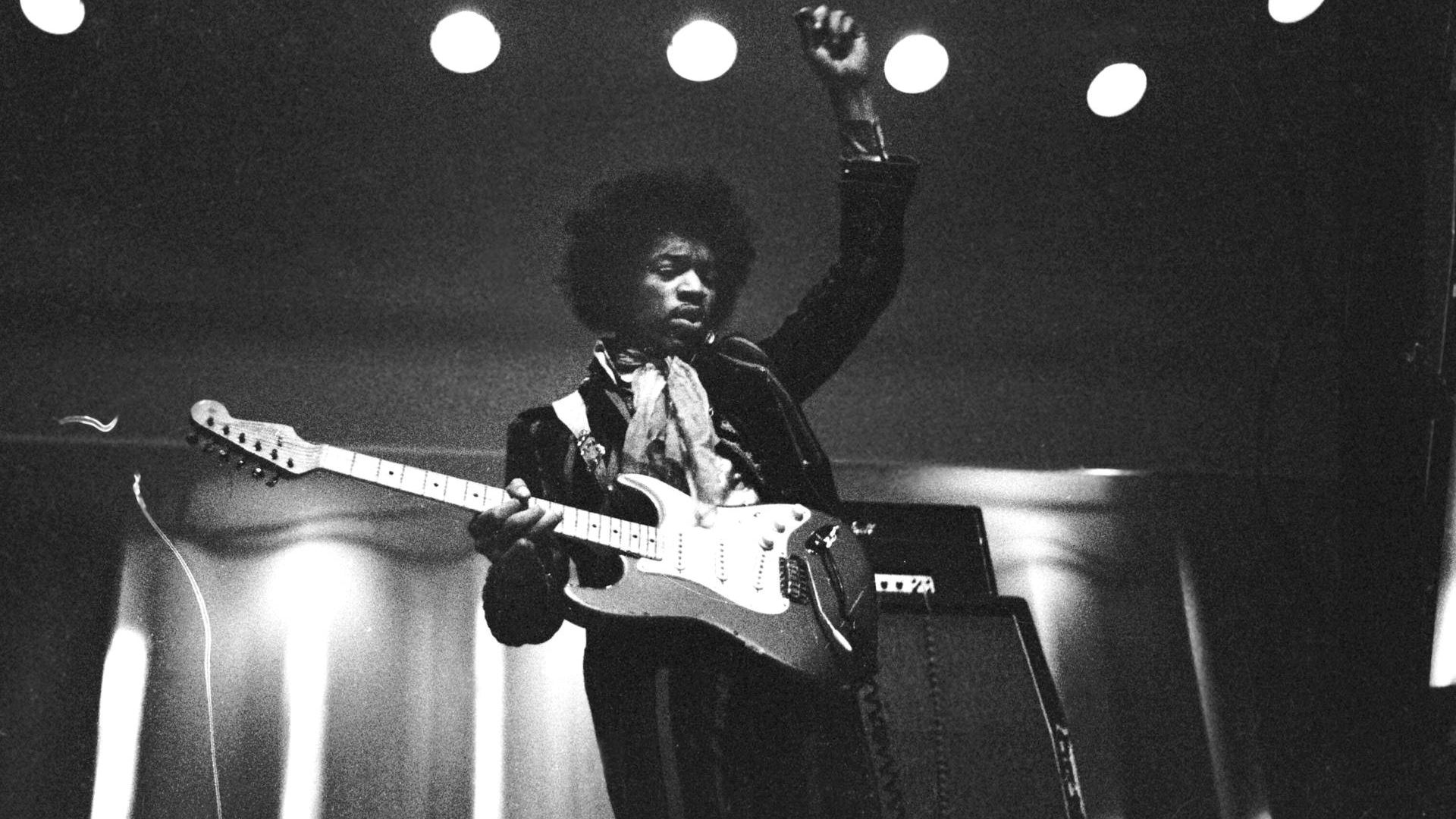 Hannu Lindroos / Lehtikuva, Wikimedia Commons
Hannu Lindroos / Lehtikuva, Wikimedia Commons
19. He Praised Him
According to the stories, Chicago’s time as Jimi Hendrix’s opener wasn’t the first time they had crossed paths with the legendary guitarist. Supposedly, while at the nightclub, Whisky a Go Go, the band had previously run into Hendrix, who told Walter Parazaider, “Your guitarist is better than me”. Allegedly, Hendrix's adoration didn't end there.
 FilmRise, Chicago: The Terry Kath Experience (2016)
FilmRise, Chicago: The Terry Kath Experience (2016)
20. He Got A Stamp Of Approval
Danny Seraphine's own recollections take the Hendrix story to yet another level. According to him, both Hendrix and the drummer Mitch Mitchell uplifted the band by saying, “You are the best band I’ve ever heard in my life". These unforgettable compliments were, in Seraphine's words, "good for our souls".
It's no wonder that the wins kept rolling in.
 Koh Hasebe/Shinko Music, Getty Images
Koh Hasebe/Shinko Music, Getty Images
21. He Stayed Involved
A year after their first album, the band released their next project under their new name, although it’s now known as Chicago II. This included their next big hit, “25 or 6 to 4,” which had a guitar solo by Terry that became a fan favorite at shows. Understandably, every subsequent album would include at least one song and one lead vocal by him for the rest of his life.
Even when compared to others, Terry’s skill spoke for itself.
 FilmRise, Chicago: The Terry Kath Experience (2016)
FilmRise, Chicago: The Terry Kath Experience (2016)
22. He Was Perfect
Terry wasn’t Chicago’s only vocalist, but even early on, the band often chose him to lead. In Chicago II, a medley called "Ballet for a Girl in Buchannon" includes the song "Make Me Smile," in which Terry sings lead vocals. Initially, several members were possible options for the lead, but when the songwriter James Pankow heard Terry sing it, the choice was clear.
Soon, they branched into uncharted territory.
 Koh Hasebe/Shinko Music, Getty Images
Koh Hasebe/Shinko Music, Getty Images
23. They Went Across The Pond
Chicago’s fame grew bigger and bigger, until it eventually brought them all the way to Europe in 1970. Right away, they got a firsthand glimpse of how popular they had become in London, especially during their performance at the Royal Albert Hall. Here, every band member received their own introduction, each accompanied by a standing ovation.
Of course, the public back home didn’t forget about them.
24. They Became Popular
Once Chicago returned from Europe, still riding that high, they arrived shocked to see another surge of fame in America. This was mostly due to a version of their song, “Make Me Smile,” which had been edited for radio. This change initially prompted outrage from the band until they realized that through this version, their song had reached the Top Ten.
Admittedly, some of this fame went to Terry’s head.
 Koh Hasebe/Shinko Music, Getty Images
Koh Hasebe/Shinko Music, Getty Images
25. He Went Off
The band hadn’t seen their last stay in the UK, but upon their next trip, they found that their fame had diminished. While their American fanbase grew, most across the pond had moved on to other musicians like Eric Clapton. This shift resulted in a chilling outburst by Terry. While attending a London press conference, he shouted a string of expletives at the journalists.
However, it wasn't just Terry's professional life that served him up a dish of disappointment.
 FilmRise, Chicago: The Terry Kath Experience (2016)
FilmRise, Chicago: The Terry Kath Experience (2016)
26. They Called It Quits
The life of a rock star can be admittedly tough on romantic relationships, a truth that Terry would come to realize even more during this decade. Previously, Terry met a woman named Pamela Robinson, and the two initially hit it off before they married in 1970. However, their feelings turned sour over the next five years, leading up to a divorce.
He wouldn’t be alone for long, however.
 FilmRise, Chicago: The Terry Kath Experience (2016)
FilmRise, Chicago: The Terry Kath Experience (2016)
27. He Found Someone Else
The marriage between Terry and Pamela was bleak, to say the least, so he was all too eager to move on after they split up. Fortunately for him, he fell in love once again with actress Camelia Ortiz, and the two married in 1976. Furthermore, they welcomed their first and only child, Michelle, the same year.
Tragically, though, time was already running out.
 Ernesto Di Stefano Photography, Getty Images
Ernesto Di Stefano Photography, Getty Images
28. They Left Him
By the end of the 70s, Chicago wasn’t exactly in the best place, and they knew that a change was necessary. While the band was still enjoying a fair amount of success, the dynamics behind the scenes were becoming increasingly miserable. So, in 1978, the band fired James Guercio as their manager. This kind of discord only spread—and the consequences were disheartening.
 Koh Hasebe/Shinko Music, Getty Images
Koh Hasebe/Shinko Music, Getty Images
29. They Couldn’t See Eye To Eye
Soon enough, it became more and more evident that the problems of the band members didn’t only lie with their management. The strife between Terry and some of his bandmates was ever-present, such as his issues with Peter Cetera, whose “level of self-confidence” had long since bothered Terry.
Of course, he had his own problems to worry about.
30. He Had A Problem
Terry had taken to the life of a rock star like a fish to water, which unfortunately meant he adopted many of the negative aspects typical of that lifestyle. Worse still, he seemed to have a high tolerance for illicit substances, and even his fellow bandmates pointed out his excessive use of them. This only exacerbated his other issues.
31. He Wasn’t Well
Despite the band’s successes and the many praises he received for it, Terry had only become unhappier as the years passed. These feelings then became worse due to his dependence on illicit substances, of which he wasn’t ignorant, as he eventually told his bandmates that he was sure his addiction would be the end of him if he didn’t do something.
However, his story was already coming to an end.
 FilmRise, Chicago: The Terry Kath Experience (2016)
FilmRise, Chicago: The Terry Kath Experience (2016)
32. They Hung Out
Despite some interpersonal issues with others, Terry seemed to enjoy spending time with his friends. For instance, on the fateful night of January 22, 1978, he visited Laudir de Oliveira—a percussionist who had joined Chicago earlier in the decade. The two of them had tea, and their conversations lasted until morning. They chatted about their plans for the future. But for Terry Kath, this future was not promised.
Unbeknownst to the two bandmates, this was the very last night before Terry’s passing.
 Koh Hasebe/Shinko Music, Getty images
Koh Hasebe/Shinko Music, Getty images
33. He Found Another Hobby
Over the last several years, Terry had grown as a person and expanded his horizons to include more passions than those in the realm of music. Still, this may not have been a good thing, as he soon developed a penchant for guns and firing at targets, which meant that he frequently had a weapon on him.
This was just one part of a recipe for disaster.
 FilmRise, Chicago: The Terry Kath Experience (2016)
FilmRise, Chicago: The Terry Kath Experience (2016)
34. He Wasn’t In A Good Place
Terry still wasn’t slowing down, and after a party in LA on the night of January 23, 1978, he found himself at the home of one of Chicago’s roadies, Don Johnson. It was just the two of them, and beyond the festivities of that night, Terry had already been partaking in some hard substances for several days.
Naturally, his decision-making wasn’t the best.
 FilmRise, Chicago: The Terry Kath Experience (2016)
FilmRise, Chicago: The Terry Kath Experience (2016)
35. He Was Worried
As Terry and Johnson hung out following the party, the situation suddenly became more dangerous as Terry retrieved his guns. Taking out a 9mm, he sat down and started to clean it, which instantly put Johnson on edge. Realizing Terry’s addled state, he adamantly warned the guitarist to be careful.
Terry was far calmer, though.
 Koh Hasebe/Shinko Music, Getty Images
Koh Hasebe/Shinko Music, Getty Images
36. He Reassured Him
Terry wasn’t in the best mindset to be making judgments, so in response to Johnson’s concern and warnings, he was quick to dismiss any risk of bodily harm. Terry told his host that there was nothing to worry about, stating, “Look, the clip is not even in it”. Of course, he wasn’t considering all the possible dangers.
 FilmRise, Chicago: The Terry Kath Experience (2016)
FilmRise, Chicago: The Terry Kath Experience (2016)
37. He Showed Him
For better or for worse, Terry wasn’t one to let others influence his decisions, which turned out to be a fatal error on this night. To illustrate that there was nothing to get worked up about, Terry showed Johnson the empty clip in his hand before placing it back in the 9mm and uttered his unforgettable final words: “What do you think I'm gonna do? Blow my brains out?”
 FilmRise, Chicago: The Terry Kath Experience (2016)
FilmRise, Chicago: The Terry Kath Experience (2016)
38. He Pulled The Trigger
Terry went beyond simply trying to reassure Johnson with his words, and after reinserting the empty clip, he started waving the 9mm around to make his point. Unfortunately, while he was correct about the empty clip, he failed to notice the round still in the chamber. Accidentally pulling the trigger when the barrel was next to his temple, Terry Kath took his own life.
The fallout was unspeakably heartbreaking.
 FilmRise, Chicago: The Terry Kath Experience (2016)
FilmRise, Chicago: The Terry Kath Experience (2016)
39. He Went Over There
Shocked and hysterical, Don Johnson witnessed the entire situation that led to Terry’s passing. Chicago founding member Danny Seraphine received the news while he was driving and raced over to the house, finding Johnson in the corner, crying uncontrollably. Understandably, neither man was in any kind of state to help out.
40. He Couldn’t Do It
Seraphine stayed there with Johnson until the local authorities arrived at the ghastly scene, with the coroner in tow to determine Terry’s final moments. As they looked around and investigated the body, the coroner found it difficult to move it by himself, asking Seraphine to help him. However, the drummer was far too distraught.
This wasn’t the only issue they had.
 Koh Hasebe/Shinko Music, Getty Images
Koh Hasebe/Shinko Music, Getty Images
41. He Was Too Tall
As the horrific night wore on, authorities determined everything they needed to and prepared to head out, taking Terry’s body with them. However, another problem got in the way—he was too big. Terry wasn’t only too heavy for the coroner to lift alone, but also too tall to fit in the body bag, so his snakeskin boots stuck out of the end as they transported his remains.
Naturally, the public surged with speculations.
 FilmRise, Chicago: The Terry Kath Experience (2016)
FilmRise, Chicago: The Terry Kath Experience (2016)
42. They Denied It
Immediately, as news spread about Terry’s passing, both the press and the general public began to speculate as to the nature of the incident and whether it had been intentional. While it was true that Terry had been in a rough place in his life, his bandmates asserted it had been no more than an accident, in line with Don Johnson’s account.
Suddenly, they began to reexamine their priorities.
 FilmRise, Chicago: The Terry Kath Experience (2016)
FilmRise, Chicago: The Terry Kath Experience (2016)
43. They Were Unsure
Terry had been such an important part of Chicago, both in skill and leadership, so his passing truly put the future of the band in jeopardy. Not to mention that, beyond the question of how Chicago could succeed without him, its members were still grieving. However, at the urging of musical director Doc Severinsen, they chose not to break up.
While Terry was so integral, the rest of the band felt that many never saw him that way.
 FilmRise, Chicago: The Terry Kath Experience (2016)
FilmRise, Chicago: The Terry Kath Experience (2016)
44. He Was Overlooked
Terry was the source of much of Chicago’s success, but since the band viewed itself as more of a flat team structure, his name fell into slight obscurity. Sure, those in the music industry knew him and respected his talent, but as Lee Loughnane stated, “His guitar playing has been overlooked, and probably because of being in such a large band”.
Luckily, those closest to him still held him in high regard.
 FilmRise, Chicago: The Terry Kath Experience (2016)
FilmRise, Chicago: The Terry Kath Experience (2016)
45. They Honored Him
Still mourning the loss of their friend and band member, Chicago decided to continue making music and published their first album without Terry, Hot Streets, in October 1978. As a way to mark the band’s return and pay homage to their late guitarist, the album included the track “Alive Again,” and they later released another song called “Feel the Spirit” in his memory.
This new album wasn’t without a guitarist, however.
 Michael Ochs Archives, Getty Images
Michael Ochs Archives, Getty Images
46. They Chose Someone
While no one could ever truly replace Terry’s influence in the band, Chicago still needed to find someone to fill their vacant guitarist position. This wasn’t an easy decision either, as over 30 people auditioned to become their newest member. At the end of it, though, they settled on a former sideman of Crosby, Stills & Nash, Donnie Dacus.
Concerning Terry’s actual family, they also wanted the world to remember him.
47. She Raised Money
Fast-forwarding a couple of decades to 2012, there was a renewed effort to bring Terry’s life and contributions to light, this time by his own family. His daughter, Michelle, wanted to produce a documentary titled Searching for Terry: Discovering a Guitar Legend, and she announced that the project had reached enough financing that year.
Through this, audiences saw the impact he left on the industry.
 FilmRise, Chicago: The Terry Kath Experience (2016)
FilmRise, Chicago: The Terry Kath Experience (2016)
48. They Loved Him
The documentary was in production over the next few years, during which Michelle interviewed not only the Chicago band members but also many other famous guitarists. Renamed as The Terry Kath Experience, it debuted at the Toronto International Film Festival in 2016, where audiences saw musicians like Mike Campbell and Joe Walsh endlessly applauding Terry’s skill.
During this time, Michelle was also able to solve an old mystery.
 FilmRise, Chicago: The Terry Kath Experience (2016)
FilmRise, Chicago: The Terry Kath Experience (2016)
49. She Found Them
Throughout Terry’s career, an unfortunate thing became commonplace—many of his guitars went missing. For a long time, his bandmates and family thought others had stolen them all. However, when researching for the documentary, Michelle surprisingly discovered a number of them in her step-grandmother’s home, including his lost “Pignose” Telecaster.
 FilmRise, Chicago: The Terry Kath Experience (2016)
FilmRise, Chicago: The Terry Kath Experience (2016)
50. She Accepted It
Even if the public had overlooked Terry during his time with Chicago, he remained a pinnacle of the music world, and the documentary certainly introduced his story to more people. As such, in recognition of his and the band’s impact, Chicago received an induction into the Rock and Roll Hall of Fame on April 8, 2016.
When the time came for the members to receive their awards, Michelle went up and accepted Terry’s on his behalf.
You May Also Like:
Ozzy Osbourne’s Secret Tragedies
Pete Seeger Sang About Tragedy Because He Knew It Well

